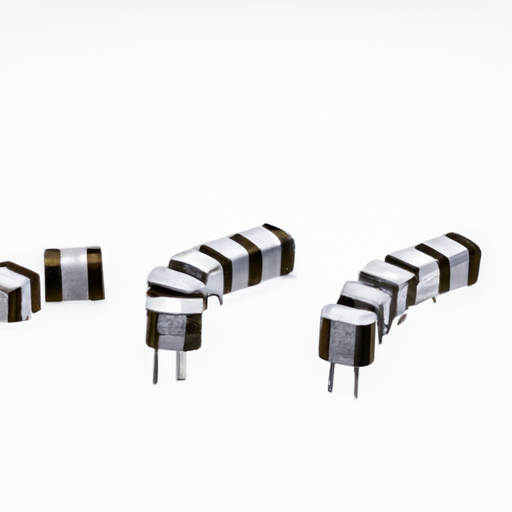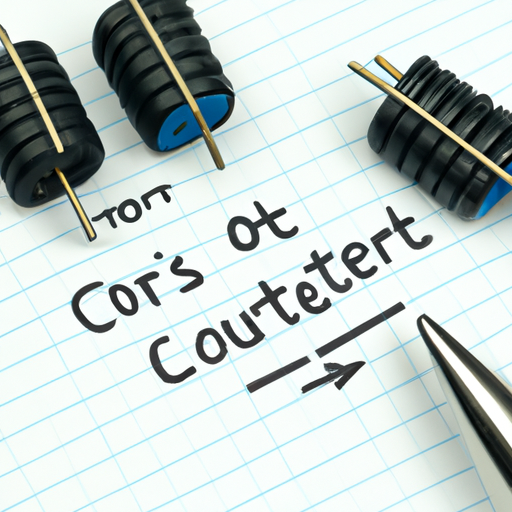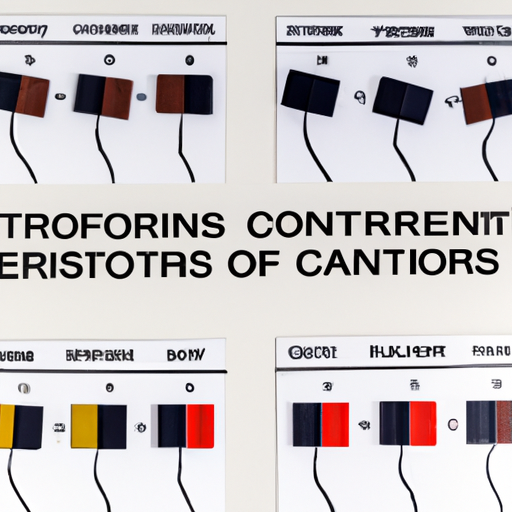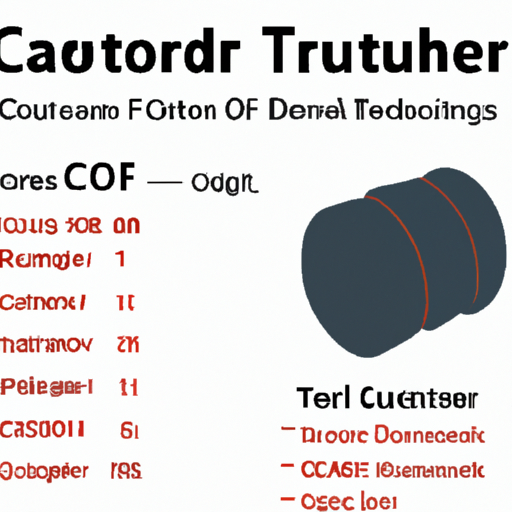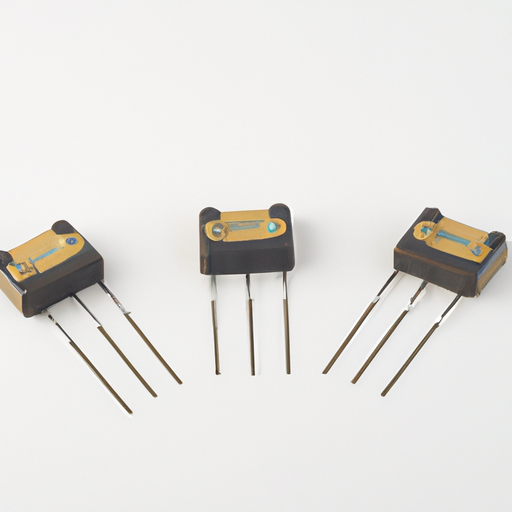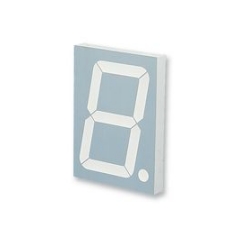What is the production process of mainstream inductors?
The Production Process of Mainstream Inductors
I. Introduction
Inductors are passive electronic components that store energy in a magnetic field when electrical current flows through them. They play a crucial role in various electronic circuits, including power supplies, filters, and oscillators. As the demand for electronic devices continues to grow, understanding the production process of inductors becomes increasingly important. This blog post will provide an in-depth look at the production process of mainstream inductors, from raw materials to quality control and distribution.
II. Types of Inductors
Inductors come in various types, each designed for specific applications. The most common types include:
A. Air-core Inductors
Air-core inductors do not use a magnetic core, relying solely on the magnetic field generated by the wire coil. They are typically used in high-frequency applications due to their low losses and high Q-factor.
B. Iron-core Inductors
Iron-core inductors utilize an iron core to enhance the magnetic field, allowing for higher inductance values in a smaller size. They are commonly used in power applications where efficiency is critical.
C. Ferrite-core Inductors
Ferrite-core inductors use ferrite materials, which have high magnetic permeability and low electrical conductivity. These inductors are ideal for high-frequency applications and are often found in RF circuits.
D. Other Specialized Inductors
There are also specialized inductors, such as toroidal inductors, which have a doughnut shape, and variable inductors, which allow for adjustable inductance. Each type serves unique purposes in electronic design.
III. Raw Materials
The production of inductors begins with the selection of raw materials, which are critical to the performance and reliability of the final product.
A. Conductive Materials
1. **Copper Wire**: Copper is the most commonly used conductive material due to its excellent electrical conductivity and malleability. It is often used in various gauges depending on the required inductance and current capacity.
2. **Aluminum Wire**: Aluminum is a lighter and less expensive alternative to copper, though it has lower conductivity. It is used in applications where weight and cost are more critical than performance.
B. Core Materials
1. **Ferrite**: Ferrite materials are used for their high magnetic permeability and low eddy current losses, making them ideal for high-frequency applications.
2. **Iron**: Iron cores are used for their ability to increase inductance and improve efficiency in power applications.
3. **Laminated Steel**: Laminated steel cores are used to reduce eddy current losses in low-frequency applications, providing a balance between performance and cost.
C. Insulating Materials
1. **Enamel Coatings**: Enamel coatings are applied to copper and aluminum wires to prevent short circuits and ensure electrical insulation.
2. **Plastic and Resin Materials**: These materials are used for insulation and structural support in the final inductor assembly.
IV. Design and Engineering
The design and engineering phase is crucial for ensuring that the inductor meets specific performance requirements.
A. Specifications and Requirements
Engineers begin by defining the specifications for the inductor, including inductance value, current rating, and operating frequency. These specifications guide the entire production process.
B. Simulation and Modeling
Advanced simulation software is used to model the inductor's performance under various conditions. This step helps identify potential issues and optimize the design before physical prototyping.
C. Prototyping
Once the design is finalized, prototypes are created to test the inductor's performance. This phase allows engineers to make necessary adjustments before mass production.
V. Manufacturing Process
The manufacturing process of inductors involves several key steps, each critical to producing a high-quality product.
A. Wire Winding
1. **Manual vs. Automated Winding**: Depending on the production scale, wire winding can be done manually or through automated machines. Automated winding is more common in large-scale production due to its efficiency and consistency.
2. **Winding Techniques**: Various winding techniques, such as layer winding and bifilar winding, are employed to achieve the desired inductance and minimize parasitic effects.
B. Core Assembly
1. **Insertion of Core Materials**: After winding the wire, the core material is inserted into the coil. The choice of core material significantly affects the inductor's performance.
2. **Types of Core Assembly**: Core assembly can vary based on the inductor type. For example, toroidal inductors require a different assembly process than traditional cylindrical inductors.
C. Insulation Application
1. **Coating Processes**: Insulation is applied to prevent electrical shorts and enhance durability. This can involve dipping the inductor in enamel or applying resin coatings.
2. **Curing and Drying**: After insulation, the inductors undergo curing and drying processes to ensure that the coatings adhere properly and provide effective insulation.
D. Soldering and Terminal Attachment
1. **Methods of Soldering**: Soldering is used to attach terminals to the inductor. This can be done through wave soldering, reflow soldering, or manual soldering, depending on the design and production scale.
2. **Terminal Types and Configurations**: The choice of terminals and their configurations can vary based on the application, affecting how the inductor integrates into electronic circuits.
VI. Quality Control
Quality control is essential to ensure that inductors meet industry standards and perform reliably in their applications.
A. Testing Procedures
1. **Electrical Testing**: Inductors undergo electrical testing to verify their inductance, resistance, and current handling capabilities. This ensures that they meet the specified performance criteria.
2. **Mechanical Testing**: Mechanical testing assesses the physical durability of the inductors, including their resistance to vibration and thermal cycling.
B. Standards and Certifications
1. **ISO Standards**: Many manufacturers adhere to ISO standards to ensure consistent quality and reliability in their products.
2. **Industry-Specific Certifications**: Depending on the application, inductors may require additional certifications, such as automotive or aerospace standards, to ensure they meet specific safety and performance criteria.
VII. Packaging and Distribution
Once the inductors pass quality control, they are prepared for packaging and distribution.
A. Packaging Methods
Inductors are typically packaged in anti-static materials to prevent damage during transport. Packaging must also protect against moisture and physical damage.
B. Logistics and Supply Chain Considerations
Efficient logistics and supply chain management are crucial for timely delivery to customers. Manufacturers must coordinate with suppliers and distributors to ensure a smooth flow of materials and finished products.
C. Market Distribution Channels
Inductors are distributed through various channels, including direct sales to manufacturers, electronic component distributors, and online marketplaces. Understanding the target market helps manufacturers tailor their distribution strategies.
VIII. Conclusion
The production process of mainstream inductors is a complex and multifaceted endeavor that requires careful attention to detail at every stage. From selecting raw materials to ensuring quality control, each step plays a vital role in producing reliable and efficient inductors for various applications. As technology continues to advance, the manufacturing processes for inductors will likely evolve, incorporating new materials and techniques to meet the demands of modern electronics. Inductors will remain a fundamental component in the ever-evolving landscape of technology, driving innovation and performance in electronic devices.
IX. References
1. Academic journals on electrical engineering and materials science.
2. Industry reports on electronic components and manufacturing trends.
3. Manufacturer guidelines and specifications for inductors and related components.
This comprehensive overview of the production process of mainstream inductors highlights the intricate steps involved in creating these essential components, emphasizing their significance in the world of electronics.

